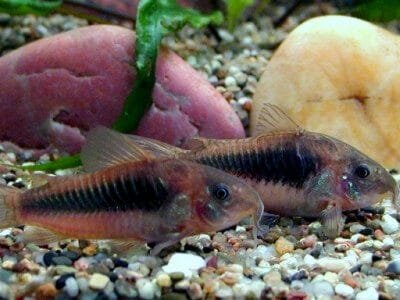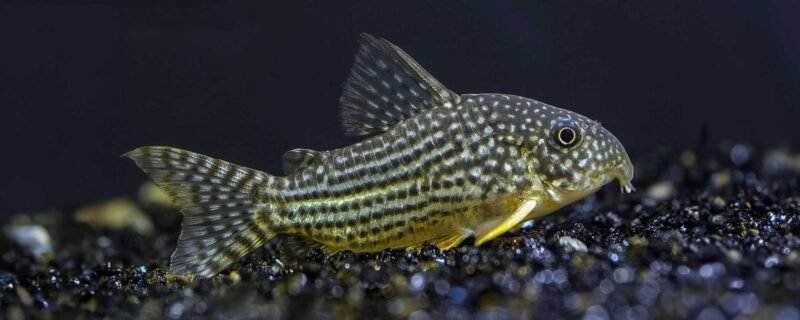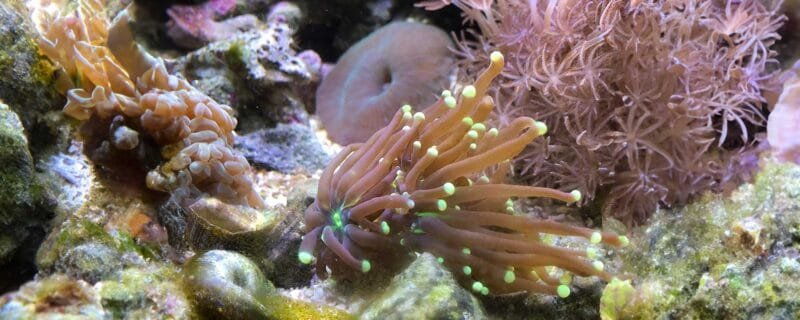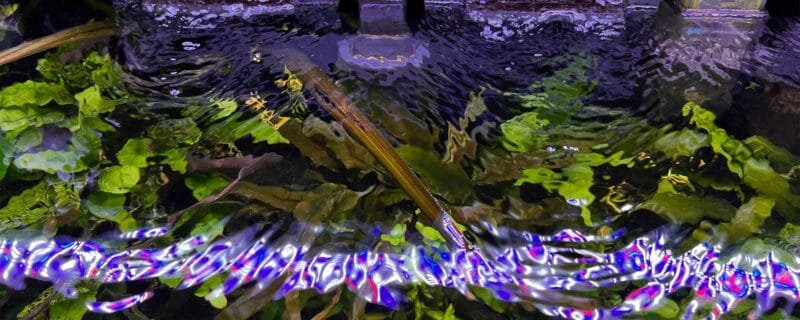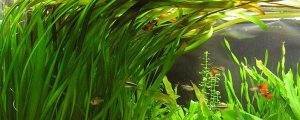The Skunk Corydoras (Corydoras arcuatus) is a charming freshwater fish known for its distinctive black “skunk-like” stripe running from its snout to its tail. Belonging to the Callichthyidae family, this bottom-dwelling species is a favorite among aquarists for its peaceful nature, social behavior, and ability to clean up leftover food. Native to South America, particularly the upper Amazon River basin across Peru, Ecuador, and Brazil, it thrives in gentle, slow-moving waters.
Natural Habitat and Origin
Corydoras arcuatus is found in clear to slightly tannin-stained tributaries and floodplain areas of the Amazon. The substrate in its native waters is typically soft and sandy, scattered with decaying leaves and driftwood. These environments are oxygen-rich, shaded by dense vegetation, and subject to seasonal flooding, which influences their breeding patterns.
In captivity, mimicking this environment—soft substrate, leaf litter, and shaded areas—will help your Skunk Corys feel at home.
Appearance and Size
The Skunk Corydoras is immediately recognizable by its bold black stripe that begins at the tip of its snout, passes over its eye, and curves upward toward the dorsal fin before running straight along the top of its back to the tail. Its base color is silvery-white to pale beige, providing strong contrast.
-
Average Size: 5–6 cm (2–2.5 inches)
-
Body Shape: Rounded, armored with bony plates instead of scales
-
Lifespan: Typically 5–8 years, though with good care they can live beyond a decade
There are similar species often confused with Corydoras arcuatus, such as Corydoras gracilis and Corydoras urucu, but the true arcuatus has a sharper, more defined arch in its black stripe.
Behavior and Temperament
Skunk Corydoras are peaceful, schooling fish that prefer the company of their own kind. They should be kept in groups of at least 6 individuals, as solitary or paired fish tend to become shy and inactive.
These fish spend most of their time at the bottom of the tank, sifting through the substrate for leftover food. They frequently dart to the surface to gulp air—a natural behavior thanks to their specialized intestinal breathing adaptation.
They make excellent additions to community tanks, coexisting well with other gentle species.
Diet and Feeding
Corydoras arcuatus are omnivores with a diet primarily consisting of small invertebrates, detritus, and plant matter in the wild. In captivity, they are easy to feed but benefit from variety.
Recommended Diet:
-
Sinking pellets or wafers (high-quality catfish or Cory-specific)
-
Frozen or live foods (bloodworms, brine shrimp, daphnia)
-
Occasional vegetables (blanched zucchini or cucumber)
-
Crushed flakes as a supplement
Feed them once or twice a day in small amounts, ensuring the food reaches the bottom where they can access it.
Water Conditions and Tank Setup
Creating the right environment is essential for the Skunk Corydoras’ health and comfort.
Ideal Tank Parameters:
-
Tank Size: Minimum 20 gallons for a small group
-
Temperature: 22–26°C (72–79°F)
-
pH: 6.0–7.5
-
Hardness: 2–15 dGH
Tank Setup Tips:
-
Substrate: Soft sand or fine gravel to protect their delicate barbels
-
Décor: Driftwood, live plants, and leaf litter for shaded cover
-
Lighting: Moderate to low
-
Filtration: Gentle flow; they dislike strong currents
Regular water changes (25–30% weekly) help maintain excellent water quality, as Corydoras are sensitive to poor conditions and nitrates.
Sexing and Breeding
Sexing Corydoras arcuatus can be subtle:
-
Females are slightly larger and rounder, especially when viewed from above.
-
Males are slimmer and slightly smaller.
Breeding Conditions:
Breeding is possible in captivity, though slightly more challenging than other Corydoras species.
-
Conditioning: Feed live and frozen foods to bring them into breeding shape.
-
Spawning Trigger: A drop in temperature after a large water change simulates the onset of rainy season—often triggers spawning behavior.
-
Spawning Process: Males chase the female in the characteristic “T-position.” Eggs are laid on plant leaves, glass, or décor.
-
Egg Care: Remove adults after spawning, as they may eat the eggs. Eggs hatch in about 3–5 days.
Fry can be fed infusoria or crushed flakes until large enough for microworms or baby brine shrimp.
Ease of Care
Ease of Care: Moderate
While generally hardy, the Skunk Corydoras can be sensitive to poor water quality and substrate abrasiveness. Regular maintenance and stable conditions are essential. Once settled, they are resilient, peaceful, and active fish that provide constant charm and character to the tank.
Compatibility and Tank Mates
Skunk Corydoras are ideal for peaceful community tanks. They thrive with other non-aggressive fish that occupy different tank levels.
Compatible Tank Mates:
-
Tetras (Neon, Rummy-nose, Ember)
-
Rasboras (Harlequin, Brilliant)
-
Dwarf Gouramis
-
Livebearers (Platies, Guppies)
-
Other Corydoras species
-
Small peaceful loaches or dwarf cichlids (like Apistogramma)
Avoid keeping them with large, aggressive, or predatory fish such as Oscars, large cichlids, or barbs that may nip fins.
Species Variations and Albino Version
While there isn’t a true albino version of Corydoras arcuatus, there are similar albino Cory species, most notably the Albino Corydoras aeneus (Albino Bronze Cory), often mistaken as “albino Skunks.”
The Albino Bronze Cory has the same peaceful temperament and care needs but lacks the black stripe and has pinkish-white coloring with red eyes.
Several lookalike species—Corydoras narcissus and Corydoras urucu—also display a similar skunk-like stripe but differ slightly in pattern shape and body size.
Related Species
Corydoras arcuatus belongs to a large genus with over 170 described species. Some closely related or similarly patterned Corydoras include:
-
Corydoras adolfoi – Adolfo’s Cory
-
Corydoras duplicareus – Duplicate Cory
-
Corydoras metae – Bandit Cory
-
Corydoras panda – Panda Cory
All share the same charming schooling behavior and make excellent mixed groups if kept in large tanks.
FAQs About Skunk Corydoras
1. How many Skunk Corydoras should I keep together?
They are schooling fish and must be kept in groups of at least six. Larger groups will display more natural, active, and confident behavior.
2. Why do my Corydoras swim to the surface so often?
This is normal behavior—they breathe atmospheric air using a modified intestinal structure. However, if it happens excessively, check your tank’s oxygen levels.
3. Can Skunk Corydoras live with shrimp?
Yes, they generally coexist peacefully with larger shrimp species like Amano or adult Cherry Shrimp. However, they may accidentally eat tiny shrimplets while foraging.
Conclusion
The Skunk Corydoras (Corydoras arcuatus) is an excellent choice for aquarists who value personality, schooling activity, and peaceful tank dynamics. With proper care—soft substrate, clean water, and a stable environment—these elegant catfish will thrive and bring lively energy to your aquarium’s bottom levels. Whether part of a community setup or a dedicated Cory tank, their beauty and charm never fade.

